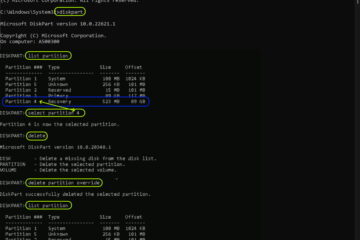As a student, you are most likely dealing with tons of academic materials every single day. You probably have plenty of course materials, lectures, assignments, and other files that are vital to be stored safely and in one place. In the 21st century, we bet that most of your materials come in digital form and, thus, are stored on your laptop, tablet, or smartphone.
For overall success, it is important that you manage your files wisely. But how can you do this? In this article, we are going to tell you about the smartest way to keep your materials safe and sound – a backup copy, and give you a step-by-step guide with actional tips on how to create copies.
What Is a Backup Copy and Why Should You Care?
If you are not really interested in technology, you might be wondering what a backup copy even is. Let’s take it from there and define the term first.
The term “backup copy” stands for a duplicate of a file that was created using special software to keep that file safe. When you create such duplicates, you protect your materials from any threats. That is, if the original data gets lost, corrupted, or deleted, you will always have a possibility to restore it in the same condition.
Why should students care about this? As was already mentioned, students these days receive lots of materials that should be secured to ensure that they don’t lose anything important.
Let’s look at this matter with the help of an example. Let’s say you are getting ready for your finals and, all of a sudden, realize that all the course materials that you were hoping to use for the test prep got deleted or corrupted. That’s definitely stressful.
Now, let’s look at another example. You’ve been working on your essay for over a week, and it’s finally done, but your laptop or computer experiences a massive breakdown, and your file gets lost. How overwhelming would that feel?
You may say that in this scenario, you could just turn to professionals and say, “rewrite my essay on EssayPro,” and that’s true. But all this stress could be avoided if you just made a backup copy.
Both these examples illustrate why you should care about duplicating your most important files.
How to Make Backup Copies: A Simple Guide for Students
Despite the fact that we are living in the 21st century, many of us, even representatives of the youngest generation, neglect the importance of backing up our documents. Moreover, those of us who are not concerned about the safety of our files use a manual approach to duplicate them, which is not really effective. This eventually leads to data loss and many unpleasant consequences.
If you want to avoid this, read our guide to protect your data the right way! Below, you will find actional steps to creating duplicates of your materials on different operating systems.
Mac
If all your college materials are stored on a macOS-based computer, you can keep them safe with the help of a special utility called Time Machine.
This utility is already built into the system, so you won’t have to install anything. The biggest benefit of this tool is that it enables you to backup your entire computer automatically and, thus, ensure that none of your accounts, apps, photos, music, and, most importantly, documents never get lost.
So, how do you use this utility? Here is the ultimate guide that will help you get started:
- use Finder to open Time Machine on your Mac computer or laptop;
- if you are using an external storage device, ensure that it is connected to the same Wi-Fi as your computer or simply connect it to your device;
- go to System Preferences to choose the drive you’d like to use;
- select the option “Back Up Automatically” if you want to protect your system at all times.
That’s it!
Pro Tip: For all users of Mac and iOS systems, there is another option for protecting your data – you can set up an automatic synchronization of all files into your iCloud Drive. Since it is cloud-based storage, it doesn’t need any additional backup. It also gives you the possibility to restore any data whenever you need it.
Windows
If you are a Windows user, the process is going to be somewhat different. Here are the steps for duplicating your PC with all the settings, data, and documents to be able to restore them in the case of corruption, deletion, or loss:
- look at the bottom left corner of your computer’s screen and press on the Start button;
- from the main menu, follow these directions: Control Panel > System and Maintenance > Backup and Restore;
- click on the Set Up Backup button to get started;
- follow all the steps suggested in the wizard to choose the right settings.
Pro Tip: Just like it is in macOS computers, Windows allows you to set up an automatic backup. Users can choose all the settings and establish a preferred schedule to ensure that their system will copy itself regularly.
Extra Tips
Although setting up automatic backup directly on your computer is a good way to secure all your data at once, there is also another option. Today, it’s extremely popular to use various cloud storage tools for an even higher level of protection.
This method can be especially beneficial for students. Besides being much safer, it allows you to access all your materials from pretty much any device at any time.
What tools should you use? There are quite a few options to choose from, so anyone should be able to find something suitable. For example, you can try such tools as Google Drive, OneDrive, and Dropbox.
Conclusion
Making a backup copy of your college materials is one of the best solutions that simplify your studying and prevent unpleasant surprises. Hopefully, with the help of our guide and pro tips, you will quickly learn how to keep your files safe.





1 Comment
8 Ways to Never Lose Your Class Notes | Nsouly · November 8, 2021 at 7:15 am
[…] hand takes some time, or we can simply forget about it. Fortunately, Mac has had an automatic file backup feature for a long time. It allows you to recover deleted files, no matter if you did it yourself […]